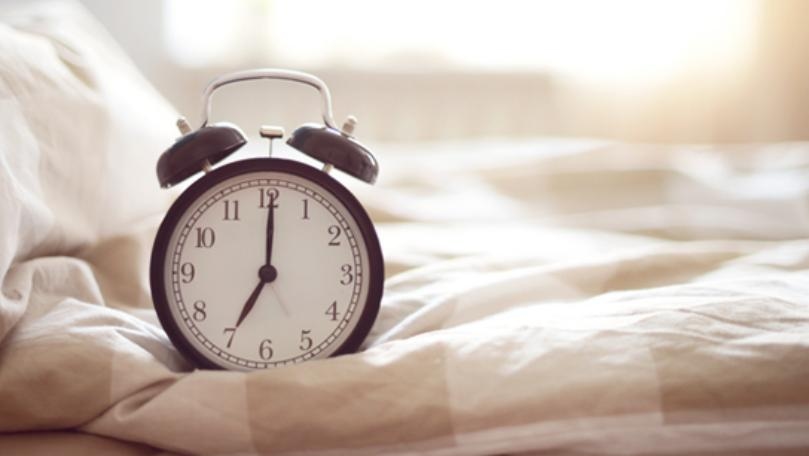Jennifer Hines
Alaska Sleep
Many of us will occasionally experience days where we simply feel tired all day long. Usually this is caused by poor sleep the night before, an intense workout the previous day, or even symptoms of a cold or flu. The feelings of extreme fatigue are often remedied with a little rest during the day or some good old fashioned sleep the next night.
For some however, feeling tired and rundown during waking hours is an everyday occurrence. One that with continued lack of sleep can prove to be harmful to their health, and result in accidents or even death from dozing off at inappropriate times. While there are many possible causes of extreme daytime sleepiness including dietary deficiencies, depression, diabetes, anemia, or thyroid problems, chronic daytime fatigue can very likely be caused by a sleep disorder.
- What is Excessive Daytime Sleepiness?
Excessive daytime sleepiness (EDS) is characterized as a chronic feeling of overwhelming daytime fatigue. Sufferers of EDS experience a constant feeling of tiredness during the day even if they seemingly get adequate amounts of sleep every night.
Symptoms of EDS
Trouble waking in the morning.
Feeling excessively sleepy or having a general lack of energy during the day.
Needing or taking frequent naps throughout the day.
Dozing off during inappropriate times such as during meals, in the middle of conversations, or even while driving.
Naps don't relieve symptoms of sleepiness.
Feelings of irritability or anxiety.
Difficulty concentrating.
Lapses in attention.
Loss of appetite.
Poor school/job performance.
- Causes of Excessive Daytime Sleepiness
Because there are a number of potential underlying causes of EDS, it's important to talk to your primary care physician about your symptoms to get treatment for the root cause. However, in many cases, a sleep disorder may be causing you to feel chronically tired everyday. Here are 3 sleep disorders that can cause EDS:
1. Obstructive Sleep Apnea
Obstructive sleep apnea (OSA) is the most common sleep disorder affecting over 20 million adults in the U.S. alone. Apnea literally translates as "cessation of breathing" which means that during sleep a person with sleep apnea stops breathing periodically during the night. These cessations in breathing can last up to 10-20 seconds at a time, and can occur up to hundreds of times a night.
Obstructive sleep apnea is caused by blockage of the upper respiratory airways in which the throat muscles collapse, the tongue falls back into the airways, or enlarged tonsils and/or adenoids impede airflow. During an apnea event the brain has to wake itself up to signal the respiratory system to continue functioning properly. Oftentimes people may not even realize they have OSA unless a concerned bed partner informs them of their nightly breathing interruptions.
Because sufferers of OSA frequently wake from sleep (even though they don't realize they're waking) it causes disturbances to their quality of sleep. The poor sleep quality caused by constant arousals from sleep to fight past an obstruction of the airway makes excessive daytime sleepiness the most common side effect of the sleep disorder.
2. Narcolepsy
Narcolepsy is also one of the most common sleep disorders afflicting approximately 1 in 2,000 people. Narcolepsy is an autoimmune neurological disorder characterized by the brain's inability to control its sleep/wakefulness cycles. For most people, sleep occurs in various stages that cycle between non-rapid eye movement sleep (NREM) and rapid eye movement sleep (REM). People with regular sleep patterns will have about five 90 minute cycles alternating between NREM and REM with approximately 75% of sleep spent in NREM. In the NREM stages of sleep the body relaxes so that it can repair and build tissues and bones and strengthen the immune system; in REM sleep, brain activity increases and most people experience dreaming. For those with narcolepsy, sleep begins almost immediately in the REM stages, and fragments of REM occur involuntarily during waking hours.
While the exact causes of narcolepsy remain unclear, scientists have discovered that patients with the disorder have significantly reduced levels of the neurotransmitter hypocretin, which promotes wakefulness. Those with narcolepsy usually have 90%-95% less hypocretin producing neurons than patients without the disorder.
The most common symptom of narcolepsy is excessive daytime sleepiness. Not only do sufferers of narcolepsy feel the need to sleep almost all of the time, they often experience "sleep attacks" where the profound need to sleep overcomes their will to stay awake, and they often fall asleep at inappropriate times. Sleep attacks can last anywhere from several seconds to several minutes.
3. Restless Leg Syndrome
Restless Leg Syndrome (RLS) is a neurological disorder characterized by an uncontrollable urge to move one's legs (or in rare cases other limbs or parts of the body). Sufferers of RLS feel an uncomfortable sensation, unexplained pain, or crawling feelings in their legs. Symptoms often manifest themselves during periods of restfulness, most notably while trying to fall asleep. The discomfort associated with RLS can range in severity from irritating to painful.
Because the condition causes pain or discomfort and a need to constantly be moving the legs to relieve symptoms while in bed, it negatively impacts the quality and amount of sleep that sufferers get at night. Most people with RLS report difficulty getting to sleep and staying asleep, and thus experience excessive daytime sleepiness as a result.









